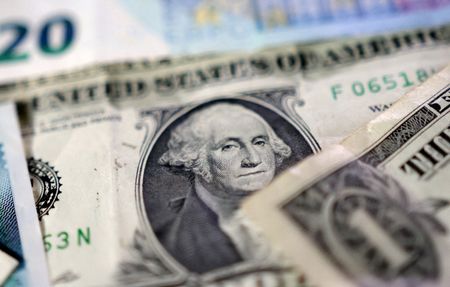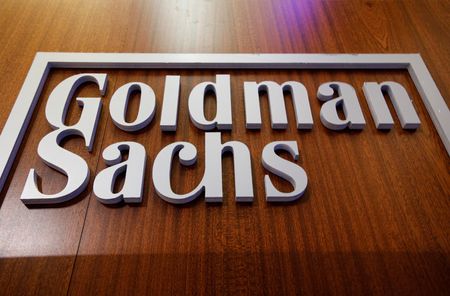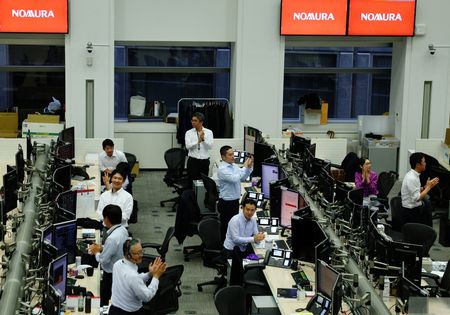By Kevin Buckland and Alun John
TOKYO/LONDON (Reuters) -Currency markets were in a holding pattern on Tuesday, with traders’ reluctance to make large bets ahead of U.S. inflation data – important for Federal Reserve policy expectations – capping moves after UK jobs data and an Australian rate cut.
A moderate reading on U.S. price pressures could cement bets for a Fed rate reduction next month, which increased after last week’s soft payrolls data.
But if signs emerge that U.S. President Donald Trump’s tariffs are stoking inflation, that could pressure the central bank to stay on hold. That in turn would fuel further tensions with Trump, who has urged the Fed to cut rates.
Economists polled by Reuters expect core CPI to have risen 0.3% in July, pushing the annual rate higher to 3%, and traders currently put the odds of a quarter-point rate cut on September 17 at about 89%.
Ahead of the data, due at 1230 GMT, the dollar was up 0.1% to 148.31 yen, while the euro was flat at $1.1613.
Sterling was also steady at $1.3434, little moved by data that showed Britain’s jobs market weakened further, albeit more slowly, while wage growth stayed strong – the latter underscoring why the Bank of England is so cautious about cutting interest rates.
The numbers seem unlikely to change expectations for the BoE, which cut rates only last week in a tight 5-4 vote.
Sanjay Raja, chief UK economist at Deutsche Bank, said there were “marginal positives” in the data and there was nothing to suggest labour market loosening was accelerating, but he added “we aren’t out of the woods yet”.
He expects the BoE to continue loosening policy gradually.
The Australian dollar fetched $0.6502 <AUD=D3>, down 0.18%, after the Reserve Bank of Australia’s widely-expected decision to cut rates by a quarter point. The central bank cited a slowdown in inflation and a looser labour market, though it was cautious on prospects for further easing.
“We remain of the view that a follow-up cut in November is more likely than not, with the cash rate to then stay at 3.35% for an extended period,” said Adam Boyton, head of Australian economics at ANZ, in a note.
Currency markets largely ignored Trump’s decision to extend a pause in sharply higher tariffs on Chinese imports for another 90 days, as widely expected.
With the U.S. and China seeking to strike a deal averting triple-digit import tariffs, a U.S. official told Reuters that chip makers Nvidia <NVDA.O> and AMD <AMD.O> had agreed to allocate 15% of China sales revenues to the U.S. government, aiming to secure export licences for semiconductors.
China’s yuan was flat at 7.195 per dollar in offshore trading.
Cryptocurrency bitcoin <BTC=> edged up to around $119,100, after climbing as high as $122,308.25 on Monday, taking it close to the all-time peak of $123,153.22 from mid-July.
(Reporting by Kevin Buckland in Tokyo and Alun John in London. Editing by Kim Coghill and Mark Potter)











